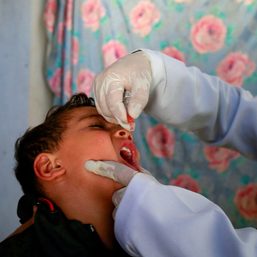SUMMARY
This is AI generated summarization, which may have errors. For context, always refer to the full article.
![[OPINION] From crisis to control: Rethinking renal healthcare in the Philippines](https://www.rappler.com/tachyon/2024/05/tl-renal-healthcare-05012024.jpg)
Each hour, approximately 120 out of a million Filipinos grapple with the onset of chronic kidney failure (CKD), according to the National Kidney and Transplant Institute (NKTI). The mortality rates of Filipino CKD patients undergoing hemodialysis (HD) and peritoneal dialysis (PD) from March to September 2020 surged to 40.6% and 50%, respectively.
Hemodialysis emerged as a vital lifeline with the highest number of PhilHealth claims annually from 2021 until June 2023 – surpassing the number of claims due to COVID-19 testing, newborn care packages, and even normal birth. This translates to around P14 billion in 2021, P17.3 billion in 2022, and P7.5 billion in the first half of 2023 spent by PhilHealth for the hemodialysis claims.
Meanwhile, peritoneal dialysis, which is more cost-effective than HD, has a low uptake. We argue that this results from a dissonance between policy and implementation.
With a continued 15% increase in chronic kidney failure cases annually for the past decade, it’s time we reevaluate the approach to renal care in the Philippines.
CKD viable treatment pathways
The treatment options for chronic kidney failure are stark: hemodialysis, peritoneal dialysis, or kidney replacement therapy.
Hemodialysis, or the filtration of blood through an artificial kidney, remains a prevalent choice among patients, accounting for 95.8% of the three modalities in 2020. Under hemodialysis, the arm’s artery and vein are linked, allowing efficient filtering of waste and toxins. This is performed at the hospital or dialysis clinic by kidney care specialists at least three to five times every week.
Meanwhile, PD emerges as a promising alternative. It utilizes the lining from the peritoneum, or the patient’s abdomen, to naturally filter waste from the blood. By infusing a two-liter PD solution into the abdominal cavity through a surgically placed catheter, an exchange occurs which drains the toxins and fluid into the solution. The dwell period lasts for six to eight hours.
Lastly, renal transplants, while effective, require a steady supply of organ donors and range from P1.2 to P1.6 million.
The dialysis dilemma: coverage, accessibility
Currently, PhilHealth extends coverage for all three options. The package rate of P2,600 per session allows patients to avail themselves of 156 hemodialysis sessions per year, equivalent to at least three sessions per week. For peritoneal dialysis, a package rate of P270,000/year covers PD solutions, accessories (such as caps for the catheter), and 90-120 exchanges, depending on the doctor’s prescription.
However, some PhilHealth claims are denied due to incomplete data, changing PhilHealth guidelines, or filing under doctors who are not PhilHealth-accredited. Moreover, PhilHealth’s reimbursement package (capped at P1.2 million) for qualified low immunologic-risk patients can mitigate the hefty cost of renal transplants.
Besides insurance and reimbursement issues, these three options encounter challenges such as out-of-pocket payment options, inadequate awareness about available services, and administrative delays in accessing dialysis services, contributing to inadequate health service delivery and, in some cases, higher mortality rates. Furthermore, the limited dialysis facilities and operational hours underscore a critical gap in round-the-clock treatment accessibility.
Not to mention the insufficient concerted public awareness efforts on the CKD options. Disinformation on kidney transplant processes and options is rampant on social media platforms like TikTok, prioritizing patient preferences while overlooking the rationale and cost-effectiveness.
PD as a potential lifeline for CKD patients
Peritoneal dialysis is regarded as the first-line modality for chronic kidney failure patients, especially for patients with chronic kidney disease stage 5. Through PhilHealth’s “PD First” Z Benefit Package, eligible patients can avail of a package of up to three to four exchanges per day or up to 90-120 solutions per month.
PD provides patients with training to initiate dialysis at home, contributing to a higher quality of life compared to facility-based hemodialysis. Hence, it has been recognized as a viable option for the pandemic, allowing patients to continue treatment at home while reducing risks of exposure to both patients and healthcare professionals.
Challenges in sustaining PD
Despite the promising potential of peritoneal dialysis to benefit the socio-economically disadvantaged, especially those in rural areas and those unable to regularly access medical facilities, the healthcare system faces a string of challenges.
The coverage provided by PhilHealth is limited, and is unable to cover three two-liter exchanges per day, equivalent to 28 days or a total of 11 months. Consequently, some patients often resort to either paying out-of-pocket for additional prescriptions or receiving inadequate dialysis treatment. This and the need to meet specific room requirements constitute the hidden costs of PD.
Globally, some patients also weigh the travel cost to the nearest dialysis units, including trade-offs between returning to work and undertaking PD training. Moreover, patients face restrictive policies such as the scheduled pickup of fluids in PD centers, increasing the risk of patients losing two weeks’ worth of supply.
Furthermore, one major challenge is the limited number of surgeons, personnel, and essential supplies, such as e-carts containing catheters and vital fluids, such as Fresenius and Baxter. While PhilHealth provides standards for the accreditation of PD health facilities, there is a limited number of PD-accredited health facilities offering PD Z package benefits free of charge.
The uneven distribution of PhilHealth-accredited health facilities across regions exacerbates the situation. As of January 2023, there were only 42 peritoneal dialysis-contracted health facilities in the Philippines, 17 of which are in NCR. While some regions have about two to four available facilities, Regions VI and VIII have only one available facility, and Regions II and BARMM lack any established facilities.
Of the 42 PD-contracted health facilities, 29 are private institutions that may not have the financial buffers available in public facilities, such as PhilHealth payments or arrangements with local government units. Despite the existence of 54 peritoneal dialysis Z centers as of March 2024, the operational challenges present between hospital-based and standalone PD centers are inadequately addressed in PhilHealth’s policy.
In light of these challenges, it is evident that a comprehensive strategy is needed to ensure equitable access to PD services, particularly in underserved areas. PhilHealth needs to collaborate with other stakeholders to revisit the PD package to ensure the timely and effective delivery of PD care.
Instituting reforms: Shifting from hospital to home-based healthcare solutions
Addressing these challenges to PD is necessary due to the increasing annual CKD cases that could potentially overburden health systems, challenge PhilHealth’s capacity, increase mortality rates, or strain socio-economically disadvantaged patients.
While PD provides optimal use of hospital resources, promotes patient independence, and fosters a better quality of life, studies should examine the cost-effectiveness of all three solutions against the desired health outcomes and population trends.
To meet population demands, access should be improved by establishing additional hospitals and mandating the establishment and operation of dialysis wards, ensuring a steady provision of hospital supplies for patients.
Improvement of health systems should be supplemented by assessing hospitals’ and PhilHealth’s capacity to provide for patients, revisiting government spending on hemodialysis versus peritoneal dialysis, and introducing reforms as necessary.
Incentivizing nephrologists and health policy professionals to advocate for coherent policies on peritoneal dialysis could further reduce mortality rates and improve patient’s quality of life by shifting the care from hospitals to homes and reducing patients’ dependence on health facilities.
Finally, improving patients’ access to information, consulting non-peritoneal dialysis patients, and exploring subsidies and accounting for additional out-of-pocket expenses may foster a more equitable and patient-centered approach to managing CKD.
Ultimately, this could relieve the burden on healthcare systems while empowering individuals to make informed decisions about their care. – Rappler.com
Kenneth Y. Hartigan-Go is the Senior Research Fellow for Health Governance at the Ateneo Policy Center, School of Government, at the Ateneo de Manila University. Angel Faye G. Castillo is the Program Manager for Health Governance at the Ateneo Policy Center, School of Government, at the Ateneo de Manila University. Ella Mae C. Eleazar is the Research Assistant for Health Governance at the Ateneo Policy Center, School of Government, at the Ateneo de Manila University.
Disclaimer: The views expressed by the writers are their own and do not necessarily reflect the views or positions of the Ateneo School of Government and the Ateneo de Manila University.
Add a comment
How does this make you feel?
![[Free to disagree] Why investigate Bell-Kenz Pharma Inc?](https://www.rappler.com/tachyon/2024/05/TL-why-investigate-punish-bell-kenz-pharma-inc-May-6-2024.jpg?resize=257%2C257&crop_strategy=attention)







There are no comments yet. Add your comment to start the conversation.